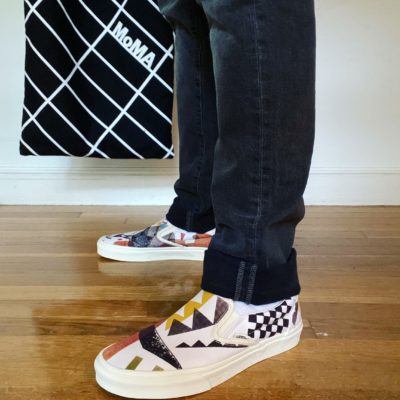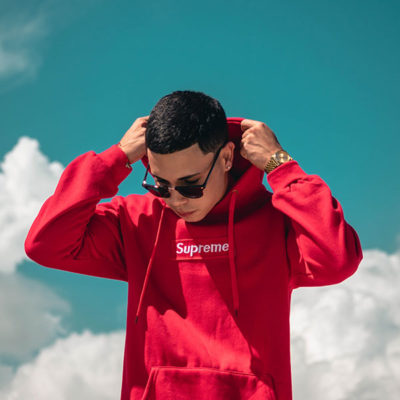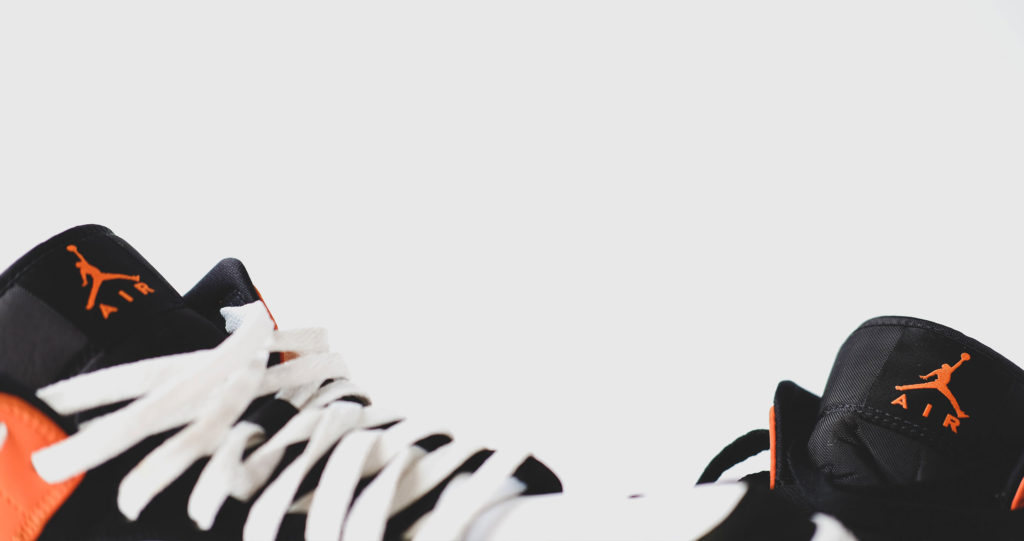Thinking
Word from the Street: Streetwear’s dualities as a lens on a year of opposites

Streetwear has long served as a lens for bigger and often dual forces happening in the world. So with 2020 being a year of dualities unlike any other before, it’s only fitting that brands from any industry can learn from stories in the world of streetwear.
Streetwear has long served as a lens for bigger and often dual forces happening in the world. After all, modern streetwear itself exists at the convergence of contrasts: accessible and high-fashion, cutting-edge and vintage, subversive of the ‘norm’ yet both inspired by it and an inspirer of it.
And while born from subcultures, streetwear has gone mainstream – a tension which last year sparked Virgil Abloh to ponder if streetwear could die in 2020, a provocation which has since been flipped on its head by a year where streetwear has seen new life.
So with 2020 being a year of dualities unlike any other before, it’s only fitting that brands from any industry can learn from stories in the world of streetwear and the related spheres of sportswear and athleisure.

Streetwear brands and influencers continue to democratize entrepreneurship and experiences, despite the pandemic’s constraints on these areas
COVID has not disrupted the resale market for sneakers, streetwear, and related accessories. According to Jesse Einhorn, Senior Economist at StockX, a stock market style online platform where buyers and sellers transact by setting their own bids and asks over these types of items, the platform has seen success despite the pandemic. Here’s what he says on StockX’s website when introducing the StockX Snapshot,1 a report on the platform’s recent performance:
“Over the past six months, StockX has seen extraordinary growth across our platform. Despite unprecedented, industry-wide challenges due to the global pandemic, we surpassed $2.5B lifetime GMV (gross merchandise value), 10M lifetime sales, and in May and June, we saw the two biggest months in the platform’s history.”
In fact, according to the StockX Snapshot report, “Between February and June, the average resale price for the top 500 sneakers increased 6%, while the S&P 500 decreased 10%.” Platforms like StockX have proven that sneakers go beyond social currency and are literally an investible asset that can turn a profit even in a pandemic. More than simply making the market for sneakers and streetwear more accessible, StockX has provided consumers with more transparency, given them a seat at the table to help shape trends, and provided them an avenue for entrepreneurship – areas where Gen Z in particular has a strong appetite.
Even as people flock from the city, their aparrel is still inspired by the streets.


Speaking of appetite, 2020 has also seen streetwear’s influence spread to new areas, such as food: Travis Scott’s highly successful partnership with McDonald’s includes a streetwear merchandise line, including items from shirts and hoodies to a McNugget body pillow. Even for consumers unable to buy any of the merch, the $6 Travis Scott meal is a refreshingly accessible and affordable product that can help consumers feel a new type of connection to a broader community and one of its now literal tastemakers. Two weeks after the launch of the partnership, McDonald’s stock price hit an all time high – a remarkable achievement for a restaurant this year – with analysts seeing the Scott partnership as a key factor.
And when it’s time to work off that meal, this year has been the first time consumers can turn to the Nike Training Club app for free. The move to free was motivated by the pandemic but subsequently made perpetual.
In Nike’s latest earnings call,2 CEO John Donahoe reported that Nike has seen “an all-time high” in global use. And regarding the Nike Run Club app, Donahue said “four consecutive months of more than a 1 million downloads each month” and noted how the app has filled the social gap for runners who engaged in group runs pre-pandemic.
Athleisure and streetwear have long enjoyed a symbiotic relationship. Streetwear has inspired the sweatpants and hoodies of athleisure, and athleisure has helped fuel mainstream acceptance and what is now being called athluxury. Athleisure of course has driven the day-to-day uniforms of seemingly everyone this year. So even as consumers this year have stayed out of cities, they’ve still been inspired by city streets, considering how their everyday athleisure outfits are likely influenced by streetwear.
This year Virgil Abloh’s Off-White announced an athleisure focused line called OFF-ACTIVE. And Lululemon, who launched its streetwear line called Lab last year, has seen a net sales increase of 3% in Q2 despite the pandemic.3
Speaking of going strong in the pandemic, according to SimilarWeb data cited by MorningBrew, site traffic in Q2 jumped by more than 130% for Alo Yoga, and by more than 90% for Vuori and Nike.4
Athleisure is a core example of a category whose brands were well-poised for a pandemic and its implications on consumers’ new day-to-day life contexts and digital shopping needs.
Streetwear faces a self-awareness moment around inclusivity
The most crucial duality streetwear has had to face this year is around diversity and inclusion. So much of streetwear and its influences are rooted in Black culture. Yet despite this, many of the brands who play in the streetwear space don’t reflect the diversity of the audiences who have fueled their business. Brands involved in streetwear are also facing questions around cultural appropriation and elitism.
The killing of George Floyd and the subsequent momentum of the Black Lives Matter movement have made the world of streetwear take a much needed look in the mirror. In a recent LA Times article, 10.Deep founder Scott Sasso remarked, “You can’t ignore the fact that there aren’t many Black brand owners in the streetwear space.”5
This year has also seen strong examples of streetwear brands take a stand. Samuel Ross of A-Cold-Wall announced 10 grants to support Black-owned businesses. And he has continued to pursue his brand’s bigger purpose in this area, recently quoted by Vogue saying “My long term, mid term and immediate goal is to support Black infrastructures and economics – not just talk to fashion, but sectors from agriculture to fintech.”6
Alife sold out of its hoodies honoring the name of Ahmaud Arbery and donating all proceeds to his family. Complex stated that “Alife was one of the first streetwear brands to take any sort of action in light of these recent current events.” 7 Alife released the hoodie on what would have been Arbery’s birthday – May 8 – three weeks before the killing of George Floyd.
Streetwear pioneers Bobby Hundreds and Pharrell gave new meaning to the idea of fashion collaboration by showing the power of collaborating around a cause, with their ‘The Hundreds’ and ‘Billionaire Boys Club’ streetwear lines dropping a collaborative Black Lives Matter t-shirt, with all proceeds donated to Black Lives Matter & the Black Mental Health Alliance.
And numerous other brands in this space have dropped pieces and made donations supporting racial injustice, hopefully a sign that streetwear brands will stitch inclusivity into their strategy ongoing.

Change for good
Streetwear and its related spheres provide provocations for all brands
This sampling of stories of streetwear and athleisure from 2020 offers thought starters for any brand to consider. Looking at the examples of StockX, McDonald’s, and Nike, can your brand help consumers transcend the current constraints by democratizing experiences in new ways that perhaps go beyond your core product? Taking a page from the athleisure playbook, is your brand set up to fit into the new occasions of your consumer’s lifestyle? And most importantly, is your brand and industry being authentically inclusive and if not – what role can you play?